Getting a flat tire is never convenient, but having the right tools and supplies in your vehicle can turn a potentially stressful situation into a minor delay. From safety gear to practical tools, this guide will walk you through the essential items you should have on hand. Being prepared not only enhances your safety but also gives you peace of mind as you travel, ensuring you can address tire issues efficiently and continue on your journey with minimal disruption.
Contents
Tire Inflator
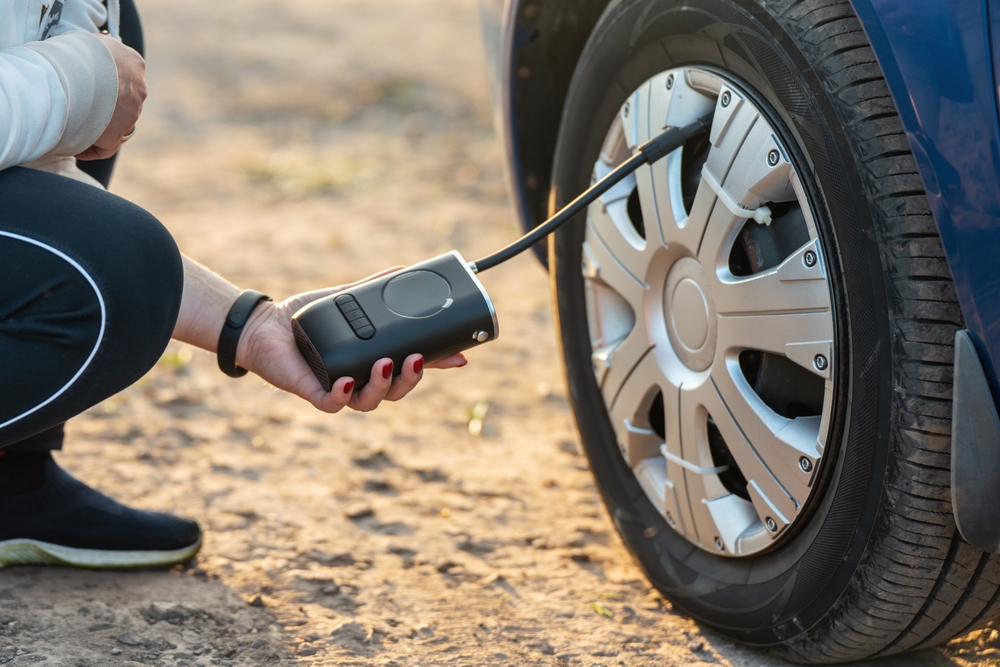
A tire inflator is an indispensable tool for addressing tire deflation without requiring a full tire change. It can be especially valuable if the damage to the tire allows for temporary re-inflation, letting you drive to a safer location or a nearby repair shop. Some inflators come with built-in pressure gauges, allowing for precise inflation, ensuring you don’t overinflate the tire. This tool is invaluable in remote areas where immediate assistance might not be available.
Emergency Triangles
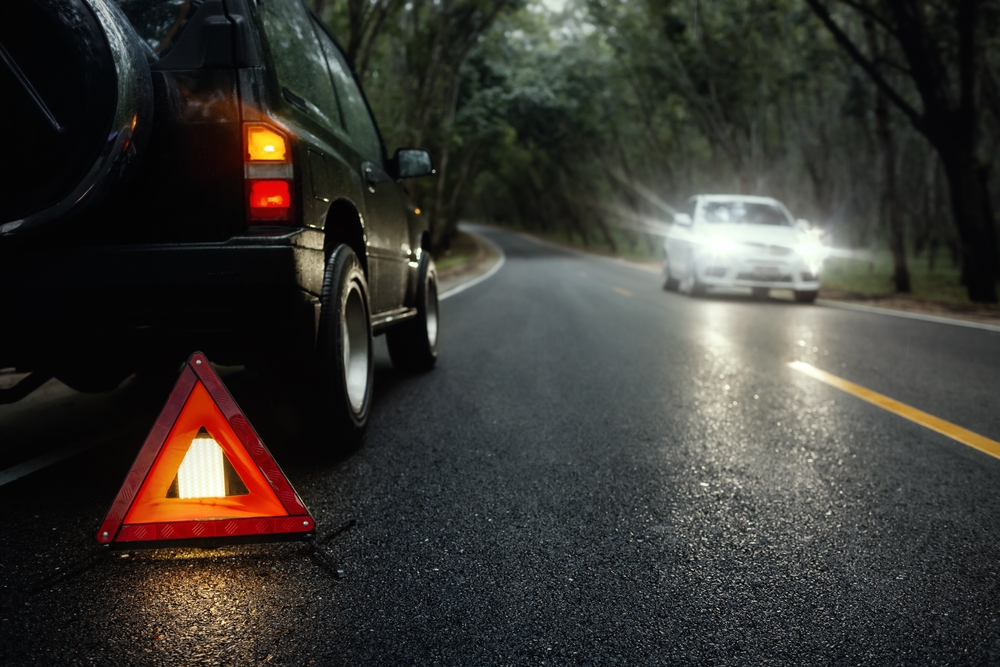
Emergency triangles are critical for safety, serving as a clear signal to other drivers that your vehicle is stationary, especially important on highways or at night. By placing them 50 to 100 feet behind your vehicle, they give other drivers ample warning, helping prevent collisions and ensuring your safety while you attend to your vehicle.
Jack

A reliable jack is essential for lifting your vehicle so you can change the tire. It’s important to ensure that the jack is compatible with your car’s model and weight. Familiarize yourself with its operation in a controlled environment to avoid learning under stressful or dangerous roadside conditions. Always position the jack on a stable, flat surface to prevent it from slipping.
Wheel Wedges
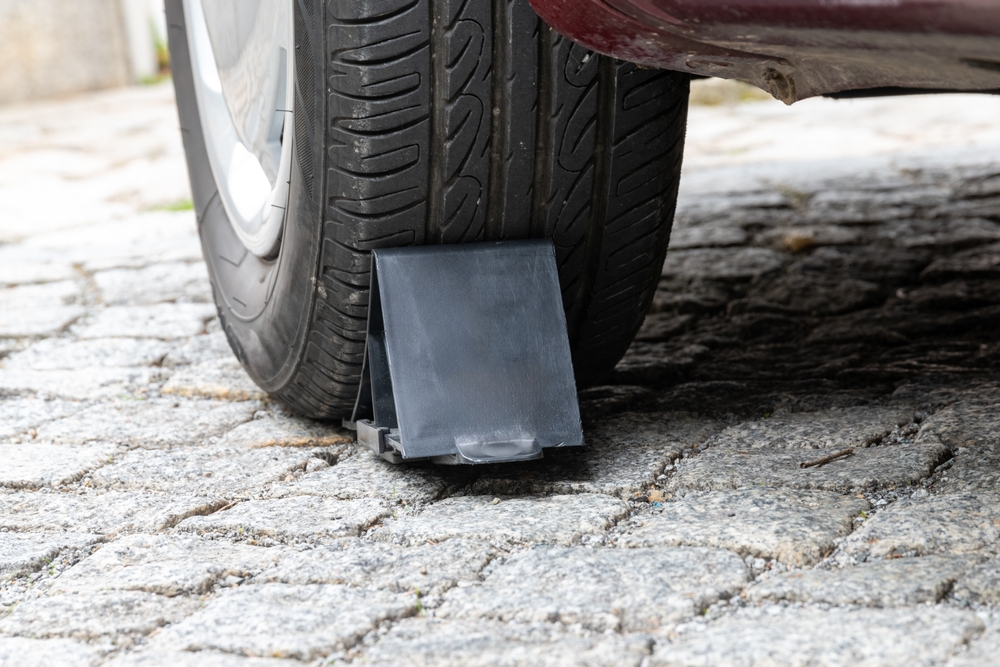
Wheel wedges help prevent the vehicle from rolling when you’re changing a tire, especially crucial when parked on an incline. These should be placed on the opposite end of the car from the flat tire—front tires if the rear is flat, and vice versa. They add an important layer of safety, keeping the car stable while you work.
Spare Tire
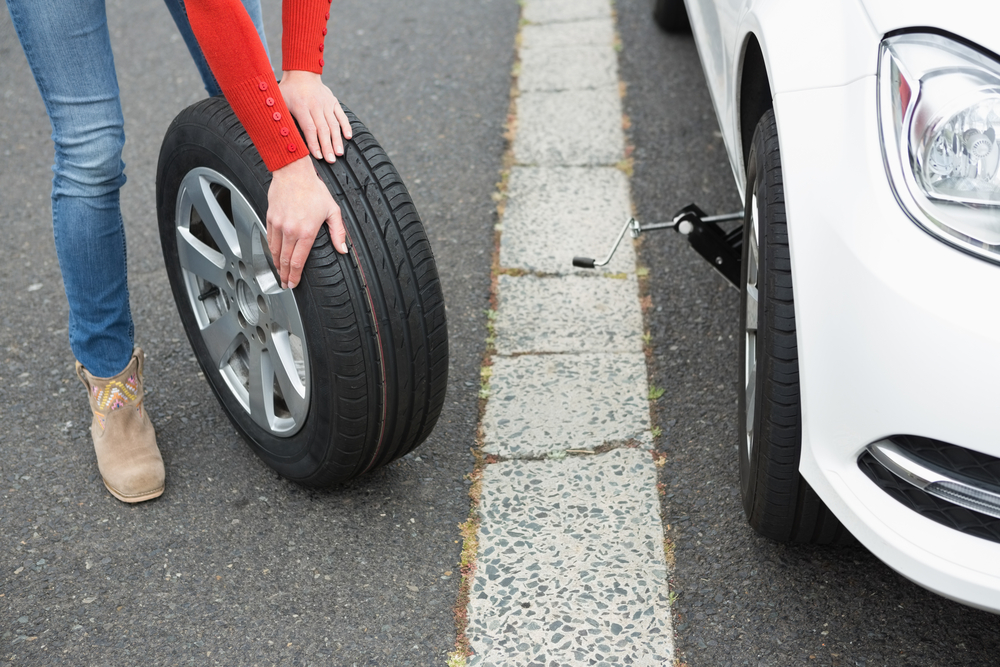
Regularly check your spare tire to ensure it’s in good working condition and correctly inflated. A neglected spare can be as problematic as a flat tire. Your vehicle’s manual will indicate the proper pressure and provide instructions for mounting it. The spare tire must fit your vehicle’s specifications.
Tire Pressure Gauge
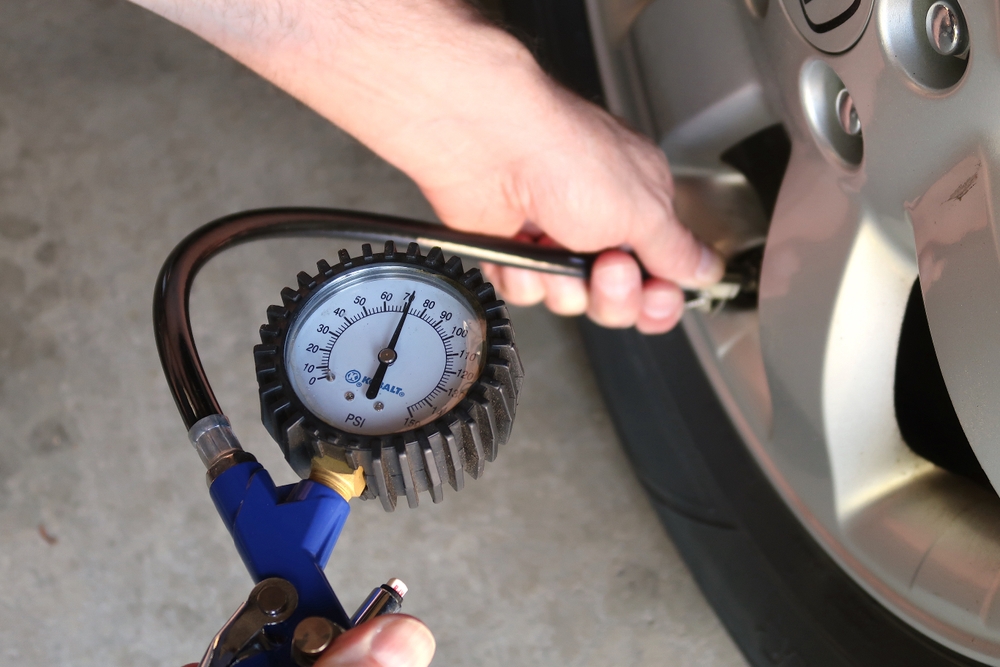
This tool is vital for ensuring your tires, including the spare, are at the optimal pressure, which is essential for safe driving and maximizing the tire’s lifespan. Checking your tire pressure monthly can help prevent flats and other tire-related issues. The gauge provides accurate readings that guide you to inflate or deflate your tires as necessary.
Lug Wrench
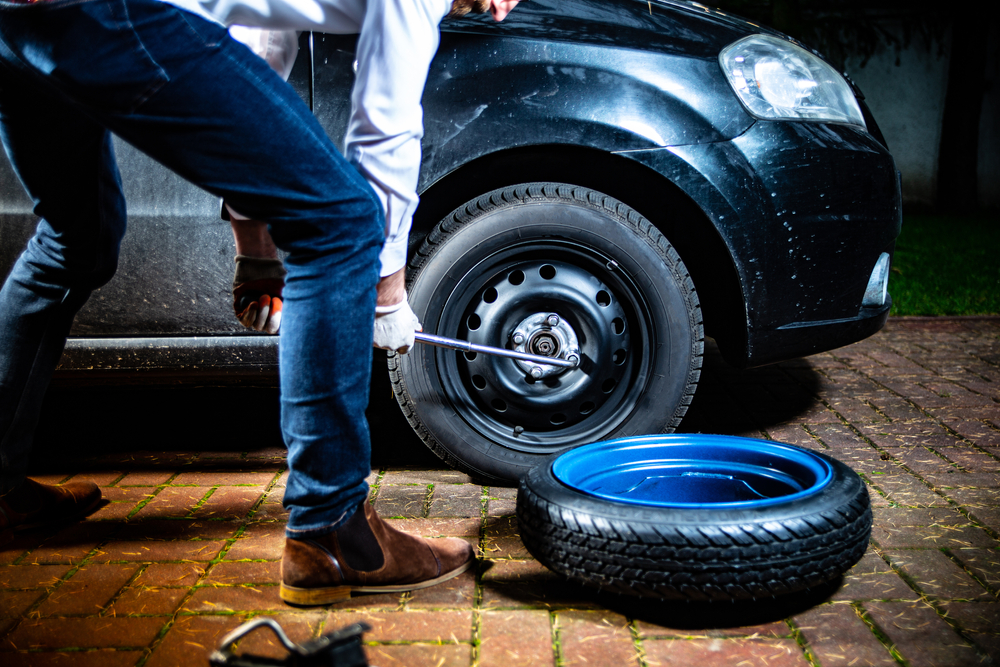
The lug wrench is necessary for loosening and tightening the lug nuts that secure the wheel to your vehicle. Ensure your lug wrench fits the lug nuts of your vehicle, and keep it within easy reach. A cross-shaped wrench can provide more leverage, making it easier to loosen tight nuts.
Tire Patch Kit
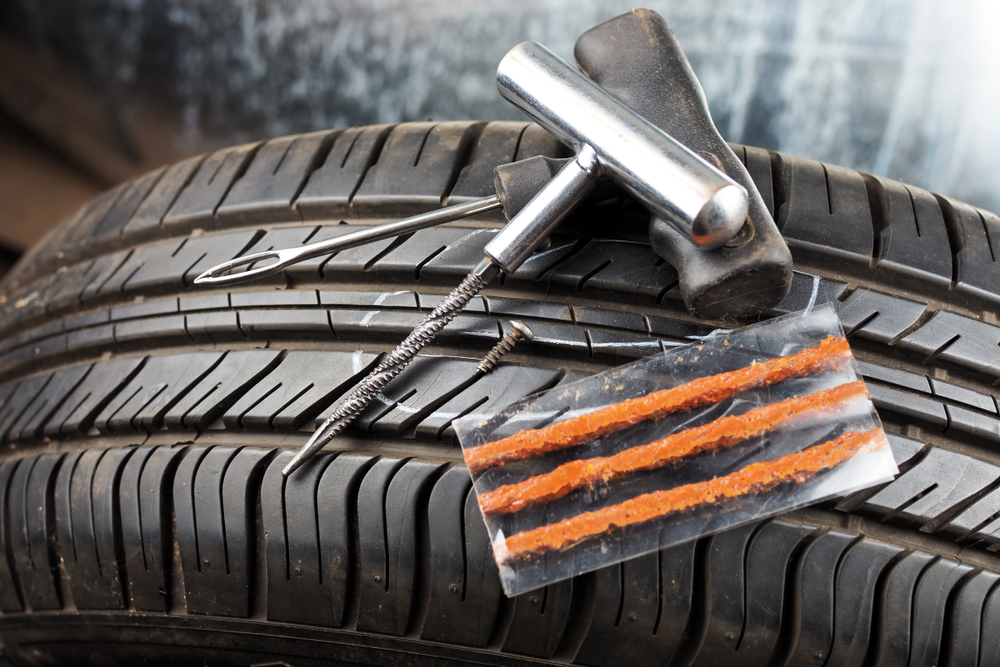
A tire patch kit can temporarily fix small punctures in the tire’s tread, allowing you to extend its usability until a professional repair can be done. The kit typically includes adhesive patches, a rasp tool to roughen the puncture site, and rubber cement. This is a practical solution for minor punctures that do not require immediate tire replacement.
Gloves
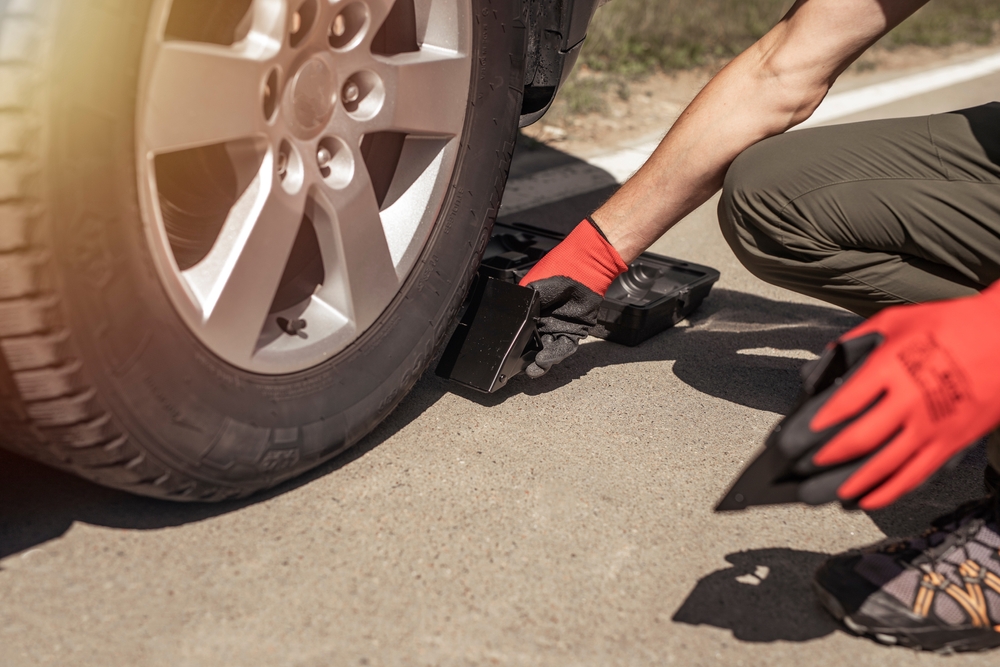
Durable gloves protect your hands from dirt, grime, and potential injuries like scrapes or cuts while changing a tire. They can also offer a better grip on tools, which is particularly useful in wet or cold weather.
Flashlight
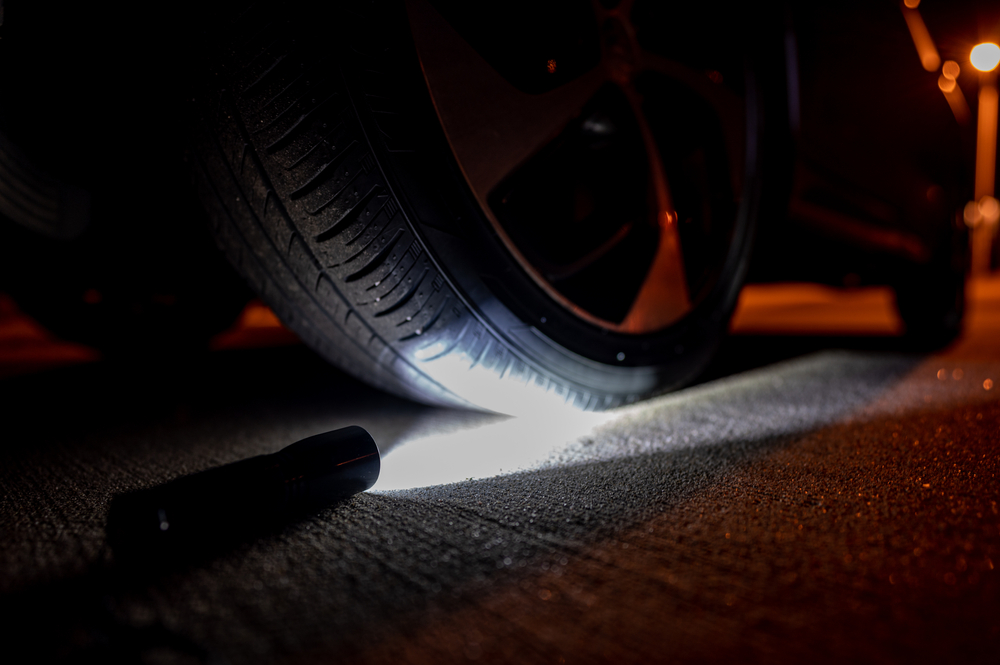
A sturdy flashlight is crucial when changing tires in the dark. Opt for a model with LED bulbs for brighter light and longer battery life. Consider a flashlight with a magnetic side or a stand, which allows you to work hands-free.
Rain Poncho

Keeping a rain poncho in your vehicle ensures you can stay dry during tire changes under rainy conditions. Working in wet clothes can be uncomfortable and potentially hazardous as it can decrease body temperature and lead to less dexterity when handling tools.
Reflective Vest
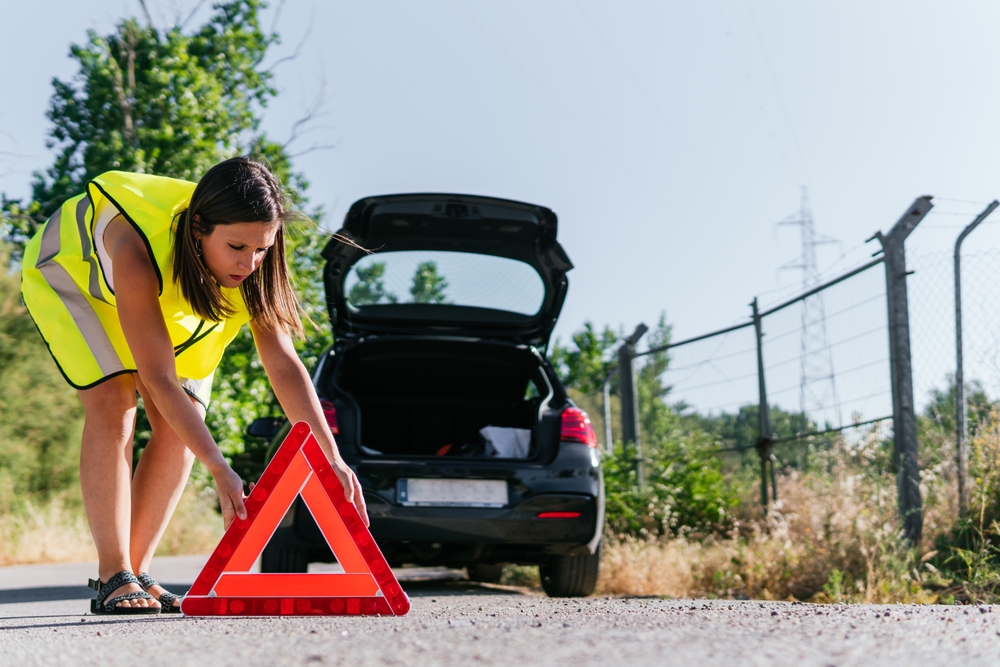
A reflective vest is crucial for visibility. It ensures that other drivers can see you from a distance, significantly reducing the risk of being accidentally struck by a vehicle, especially in poor lighting conditions.
Basic First Aid Kit
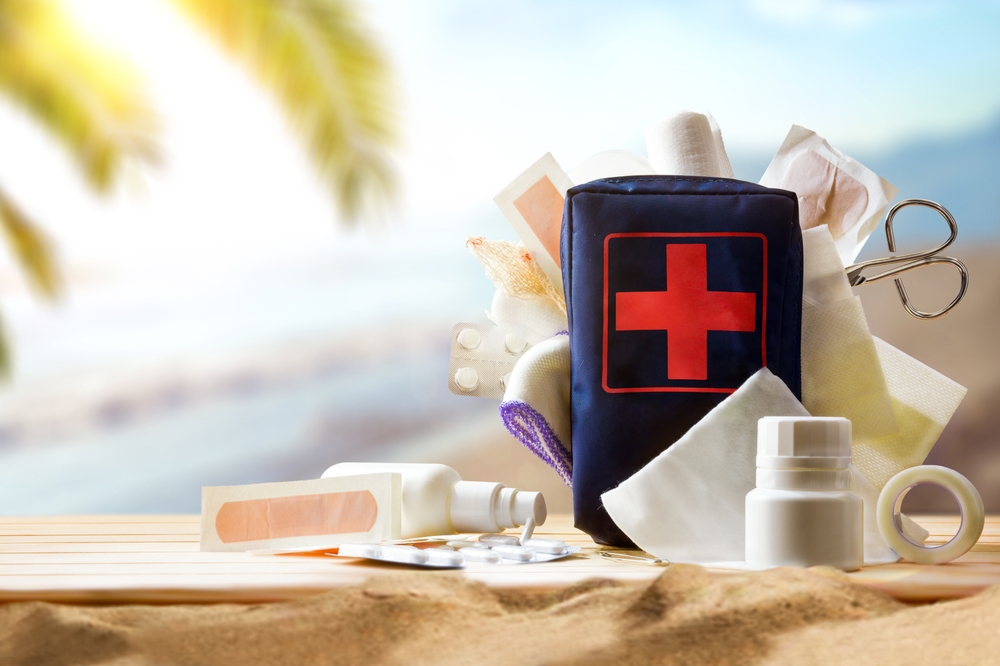
A first aid kit is essential for addressing minor injuries that might occur while changing a tire or in other roadside emergencies. It should include bandages, antiseptics, and basic medications.
Portable Battery Charger
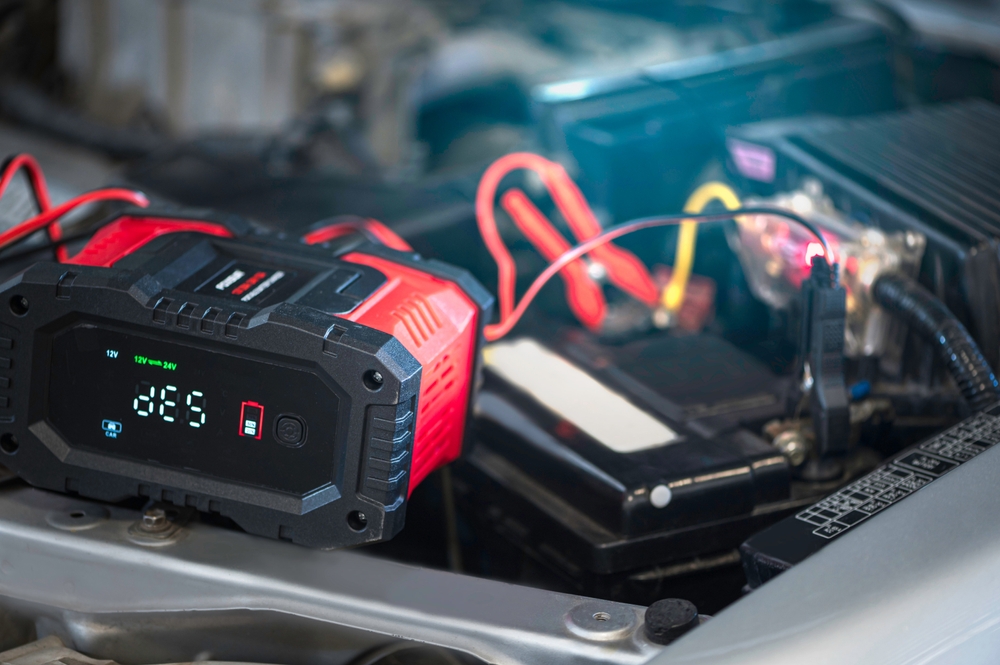
A portable battery charger can be a lifesaver if your vehicle’s battery dies while you’re dealing with a flat tire. This tool ensures you can start your vehicle and use electronic devices for illumination or communication, regardless of the battery state.
Blanket

A blanket is versatile for keeping warm if you are stranded in cold weather, and it can serve as a protective layer when kneeling or lying on the ground as you change the tire.
This article originally appeared on MyCarMakesNoise.
More from MyCarMakesNoise
20 Rare Classic Cars You`ll Never See on the Road

Some classic cars are so rare and iconic that they become legends, rarely seen on the road. These vehicles are not just about speed and power; they represent a blend of exquisite design, engineering marvels, and historical significance. Read More
20 Unusual Products Featuring the Harley-Davidson Brand

Harley-Davidson is renowned for its legendary motorcycles, but the brand’s creativity and craftsmanship extend far beyond the road. From stylish apparel to unique home décor and even custom golf carts, Harley-Davidson has ventured into various unexpected product lines. Read More
The 16 Most Beautifully Engineered Tanks in History

Tanks have played a crucial role in warfare for over a century, showcasing remarkable engineering and design. This article highlights the 16 most beautifully engineered tanks in history, each chosen for its unique blend of innovation, power, and effectiveness on the battlefield. Read More














